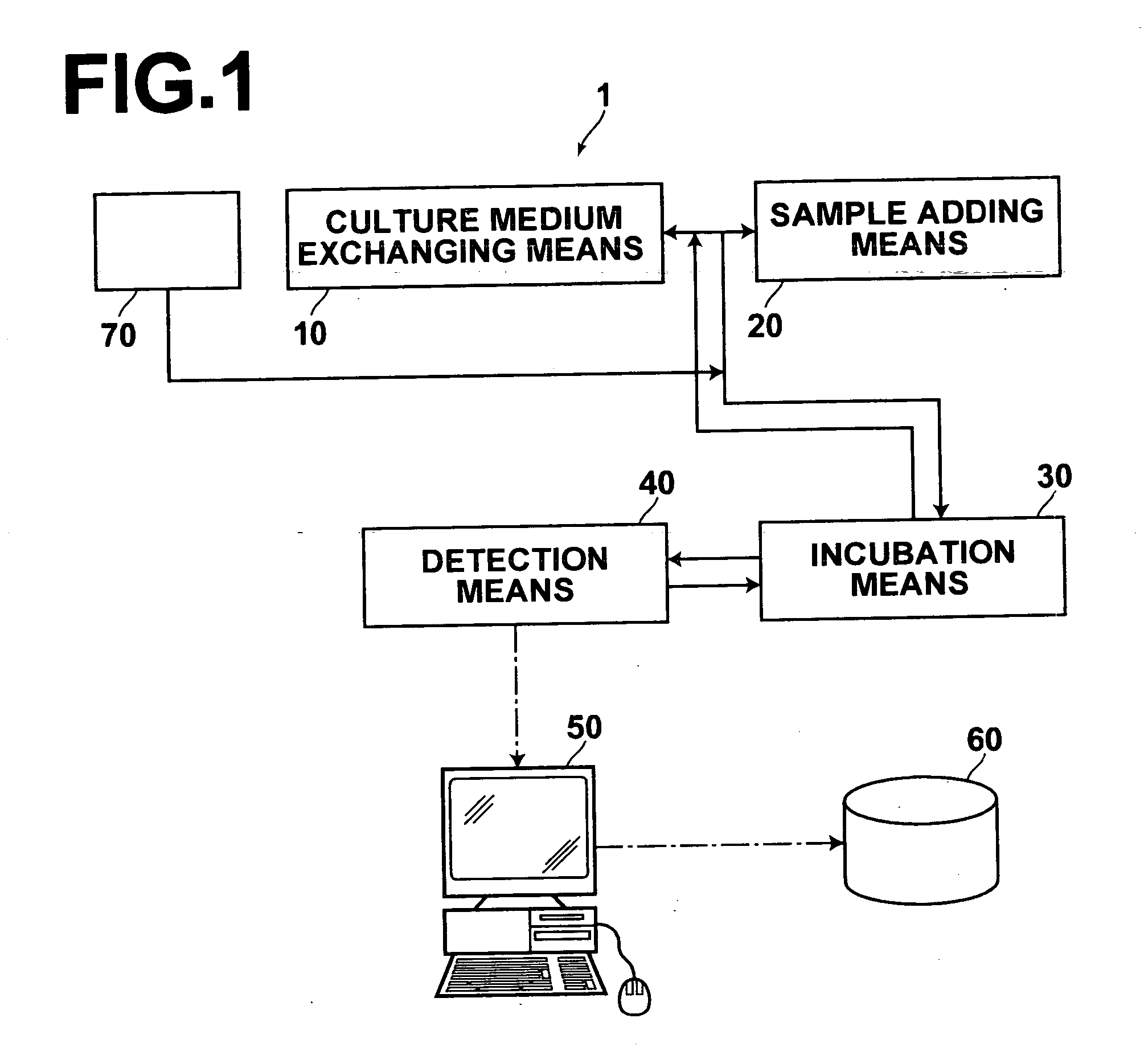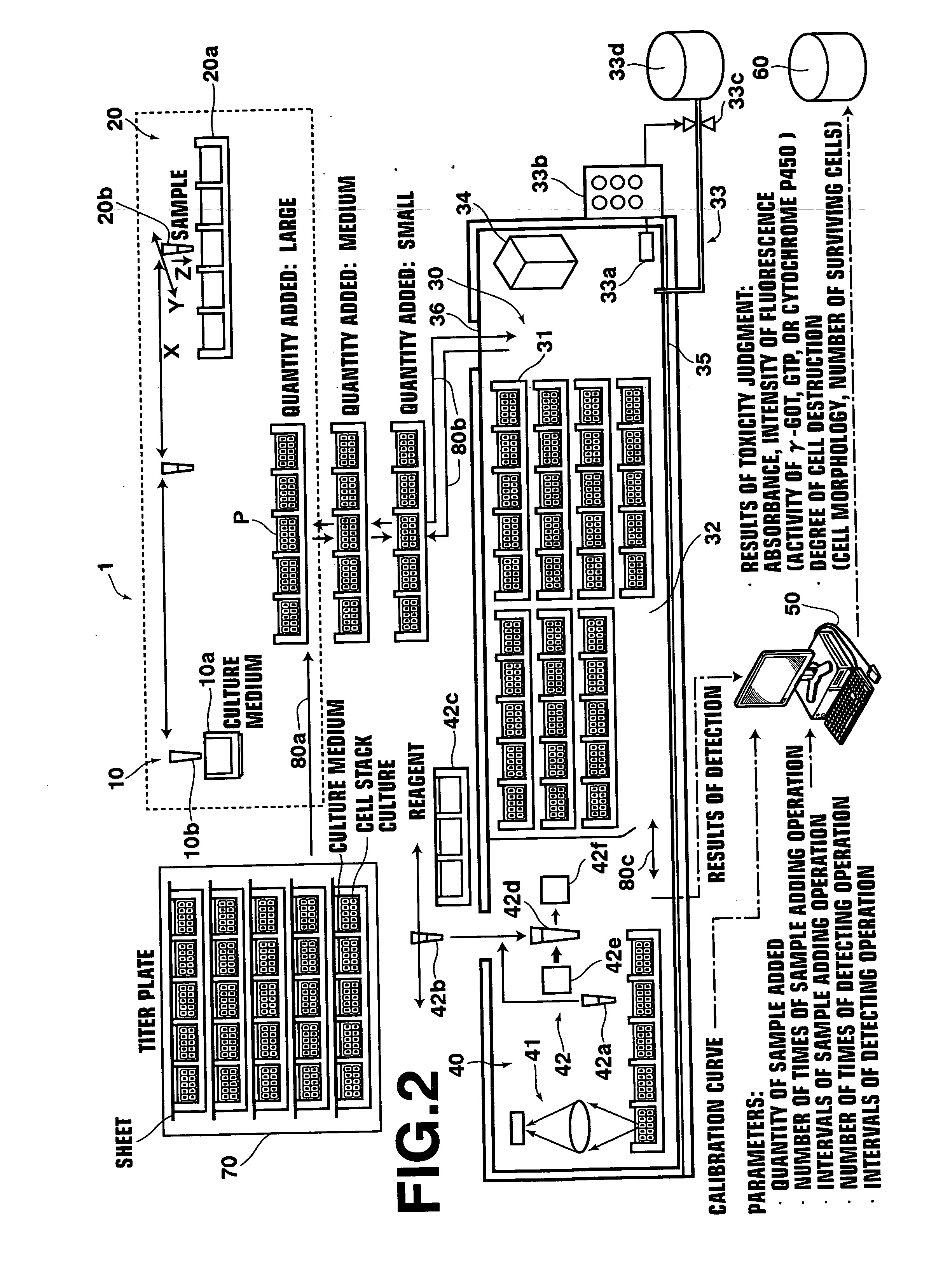Toxicity testing apparatus for cell stack cultures
a technology of toxicity testing and cell stack culture, which is applied in the direction of biochemistry apparatus and processes, biomass after-treatment, specific use bioreactor/fermenter, etc., can solve the problems of unsuitable evaluation of a large number of samples by toxicity testing using experimental animals, unsatisfactory survival periods of unicellular cultures or simple cultures of animal cells, etc., and achieves simple and reliable results. high
- Summary
- Abstract
- Description
- Claims
- Application Information
AI Technical Summary
Benefits of technology
Problems solved by technology
Method used
Image
Examples
Embodiment Construction
[0032] The present invention will herein below be described in further detail with reference to the accompanying drawings.
[0033]FIG. 1 is a block diagram showing an embodiment of the toxicity testing apparatus in accordance with the present invention.
[0034] With reference to FIG. 1, a toxicity testing apparatus 1, which is an embodiment of the toxicity testing apparatus in accordance with the present invention, comprises incubation means 30, culture medium exchanging means 10, sample adding means 20, detection means 40, analysis means 50, and storage means 60. When necessary, the toxicity testing apparatus 1 may also comprise cell setting means 70 for storing cell stack cultures before the cell stack cultures are to be used or for thawing frozen cell stack cultures, which have been stored, into the usable state. Further, though not shown, the toxicity testing apparatus 1 is provided with means for conveying incubating vessels, which contain the cell stack cultures, among the afore...
PUM
| Property | Measurement | Unit |
|---|---|---|
| temperature | aaaaa | aaaaa |
| time | aaaaa | aaaaa |
| time | aaaaa | aaaaa |
Abstract
Description
Claims
Application Information
 Login to View More
Login to View More - R&D
- Intellectual Property
- Life Sciences
- Materials
- Tech Scout
- Unparalleled Data Quality
- Higher Quality Content
- 60% Fewer Hallucinations
Browse by: Latest US Patents, China's latest patents, Technical Efficacy Thesaurus, Application Domain, Technology Topic, Popular Technical Reports.
© 2025 PatSnap. All rights reserved.Legal|Privacy policy|Modern Slavery Act Transparency Statement|Sitemap|About US| Contact US: help@patsnap.com


